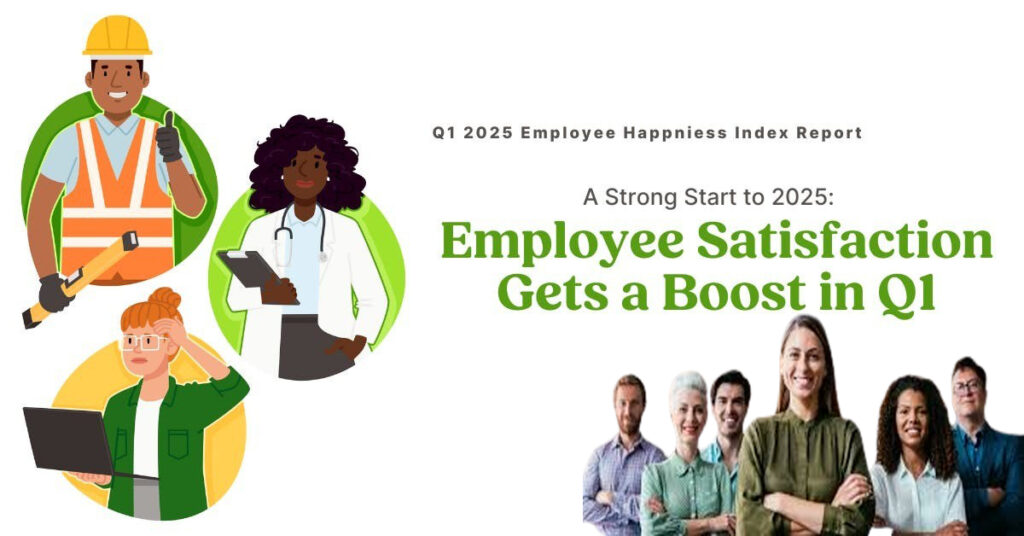What makes a great company reputation?Start with happy employees = Happy Companies – WellWise … 2025
Businesses with strong reputations typically succeed because their employees feel respected, supported, and motivated.
A company’s brand image is not built solely through polished marketing campaigns or sleek mission statements.
The foundation of any organization starts with its people.
When employee engagement is high, that positive energy flows outward — resulting in exceptional customer service, stronger brand loyalty, and even reducing the risk of public relations challenges.
To better understand what it takes to create a positive workplace culture, we spoke with Jennifer McClure, a former HR executive and recruiter who now speaks on the future of work, innovative people strategies, and high-impact leadership.
What Does Happiness at Work Really Mean?
Workplace happiness doesn’t necessarily mean constant smiles or over-the-top enthusiasm. Instead, McClure explains, it’s about finding fulfillment in the work itself — even during challenging times.
“You might think, ‘I still enjoy what I do and want to push through obstacles,’ rather than, ‘I’m unhappy and can’t perform,’” she says.
How Can Companies Cultivate Workplace Happiness?
The way an organization treats its employees directly impacts motivation, satisfaction, and retention. McClure highlights four proven strategies businesses can use to create an engaged and happy workforce.
1. Create Meaning in Work
One of the strongest drivers of employee engagement is helping people understand the value and impact of their work.
“The single most important thing you can do as a leader is to create meaning at work,” McClure emphasizes. “When people feel valued, it directly contributes to their happiness.”
Leaders can inspire engagement by linking everyday responsibilities to the organization’s bigger mission and highlighting how each role adds value. As Southwest Airlines founder Herb Kelleher once said, ‘Take care of your employees, and they will take care of your customers. That, in turn, benefits your shareholders.”
2. Live the Company’s Core Values
Core values should be more than slogans on a website — they should guide behavior, shape culture, and be modeled daily by leadership.
When leaders consistently act in alignment with values such as customer service or innovation, employees internalize those standards. This not only builds engagement but also strengthens company reputation.
McClure notes, “When employees see their leaders embody the mission, they’re more likely to feel connected and advocate for the company — both inside and outside the workplace.” Over time, this authenticity helps attract and retain top talent.
3. Listen to Employee Feedback
Creating a thriving culture also requires actively listening to feedback, both positive and negative. Today, employees often share experiences on platforms like Glassdoor, Indeed, or TikTok.
“Not everyone leaving a review online is just a disgruntled employee,” McClure points out.
If recurring concerns appear — such as poor work-life balance, long hours, or lack of respect — leaders need to take them seriously. While not every negative comment signals a systemic issue, patterns should be evaluated carefully to ensure employee concerns are addressed.
Building Reputation from the Inside Out
The foundation of a strong business reputation is built on employees who feel valued, supported, and engaged. By creating meaningful work, living core values, and listening to feedback, organizations can foster happiness at work — fueling long-term success, customer loyalty, and a positive employer brand.
When browsing platforms like Glassdoor, it’s common to see a mix of reviews — many positive and a few negative. “If you see hundreds of favorable reviews from current and former employees or interviewees, and then 10 that are critical, it’s a reminder that no organization is perfect,” says Jennifer McClure.
However, she stresses that when an employee feels strongly enough to share a negative experience online, it’s a sign company leaders should pay attention.company
4. Strengthen Culture with One-on-One Meetings
Another effective way to boost workplace culture and employee satisfaction is through consistent one-on-one meetings. These conversations allow managers to check in not only on performance but also on the overall employee experience.company
Readmore Monthly Repayment Schedule and Installments Plan PM E-Bike Scheme 2025
McClure recommends asking questions such as:
Is there anything I haven’t brought up that we need to improve or address together?
If you could instantly improve something about your job, my leadership style, or our company, what would it be?
The goal, she explains, is to move beyond surface-level updates and uncover the real challenges employees are facing. While it’s great to hear that everything is running smoothly, managers gain more value by exploring what’s not working — and then acting on that feedback.company
By encouraging open dialogue, leaders demonstrate that they value employee input, which builds trust, engagement, and long-term loyalty.
Building Happier Workplaces
Ultimately, the most successful organizations focus on three pillars:company
Core values that are consistently lived out by leadership
Meaningful work that connects employees to a bigger purpose company
Active feedback loops that ensure employee voices are heard
These foundations create environments where employees feel satisfied and motivated, which in turn strengthens company reputation and long-term success.company
What Is USA TODAY Top Workplaces 2025?
Each year, USA TODAY Top Workplaces, in collaboration with Energage, honors organizations that stand out for building exceptional workplace cultures. Winners are determined based on direct employee feedback.
In 2025, more than 1,500 organizations across the United States earned recognition as top workplaces. Explore the complete U.S. rankings and discover additional insights on workplace culture and employee engagement through the links below.


